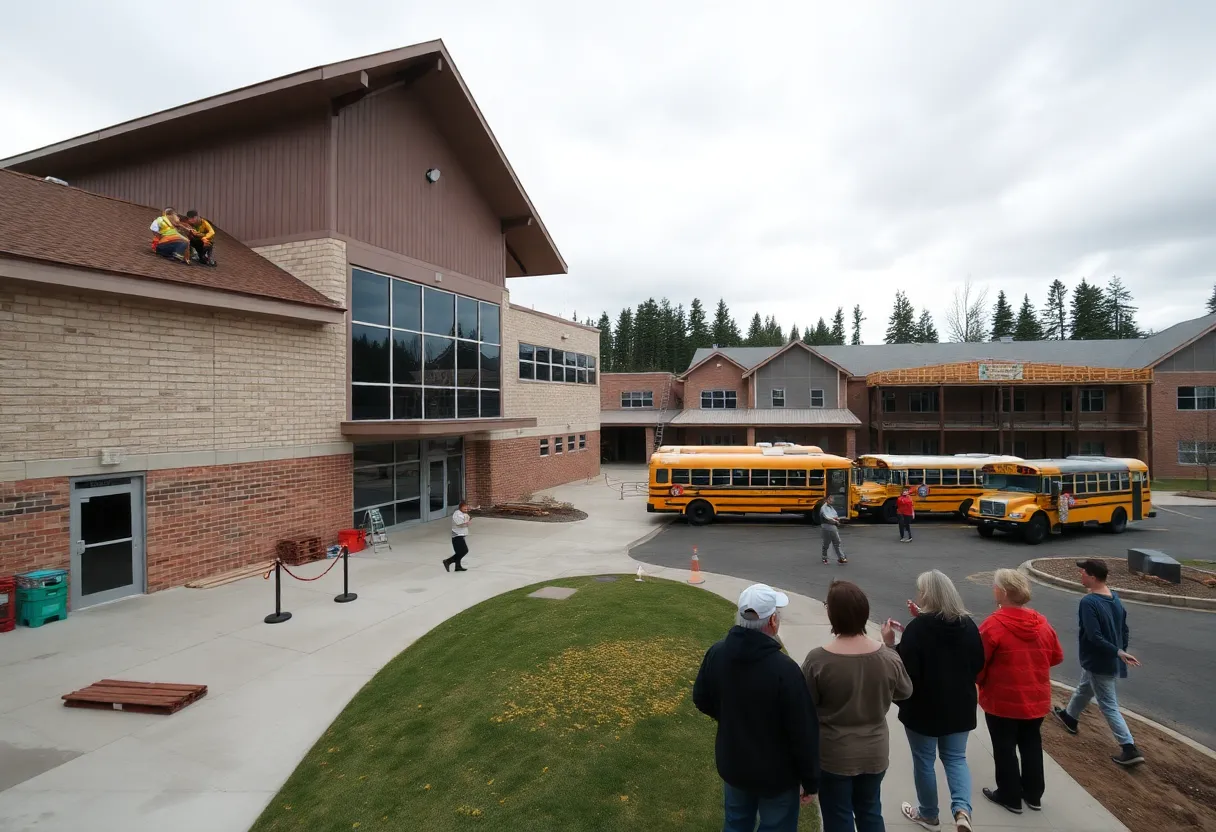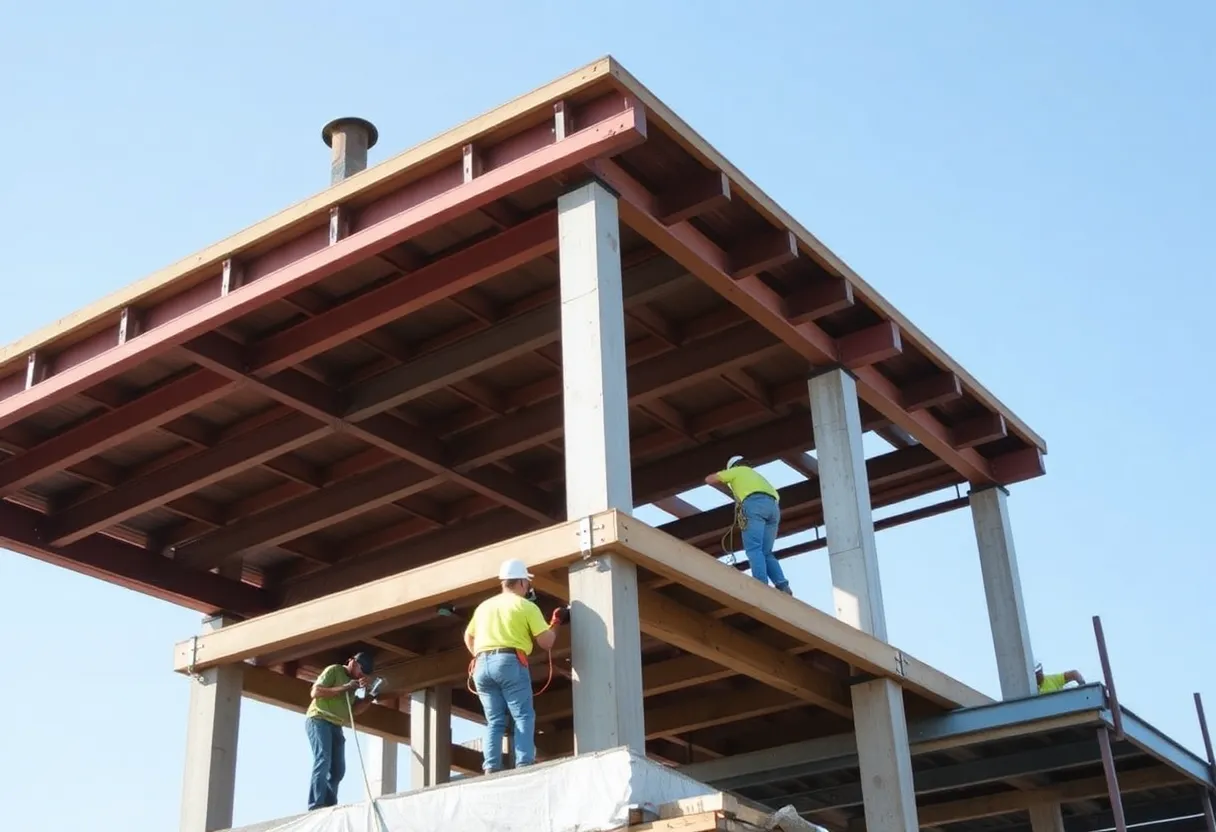Washington state, September 25, 2025
News Summary
Facing repeated failures of bond measures that require a 60% super‑majority, Washington school districts are pivoting to capital levies, grants and local partnerships to fund building repairs, safety upgrades and modest classroom additions. Levies, which need only a simple majority and run three to six years, provide phased cash flow that shapes project timing. Grants cover targeted, competitive needs and often require matching funds, while partnerships share costs and expand services. Districts are sequencing projects to levy receipts, tracking grant timelines and communicating visible results to build voter trust amid debate over property‑tax caps.
Washington school districts shift funding plans as bonds stall
School districts across the state are increasingly moving away from expensive, voter-approved bonds and instead relying on a mix of capital levies, grants and community partnerships to pay for buildings, safety upgrades and urgent repairs. The shift comes as many bond measures fail to reach the required 60% super-majority, and as debate continues over state property-tax rules that limit local revenue growth.
Topline: why districts are changing course
Bonds have long been the standard way to fund large school capital projects, but the increasing difficulty of getting measures to the 60% threshold has pushed districts to look for alternatives. Capital levies, which need only a simple majority to pass and produce funds faster for smaller projects, are now a common fallback. At the same time, targeted grants and creative partnerships with local agencies are filling gaps that bonds once covered.
How capital levies compare with bonds
Capital levies usually run three to six years, versus bonds that are typically financed over 20 to 30 years. A helpful comparison is that levies work more like a car loan for shorter-term needs, while bonds are more like a home mortgage designed to cover big, long-term investments. Levies generate cash over time — collected twice a year — so districts must plan projects and timelines around what money arrives and when. That cash-flow constraint often dictates the size and schedule of improvements.
What levies fund and when they’re used
Levies are especially useful for urgent infrastructure and growth needs. Typical uses include safety upgrades such as security cameras, access controls and secure vestibules; major maintenance like reroofing and playground repairs; and repurposing or adding classroom space to meet enrollment growth. Several districts that lost bond votes have successfully used levies to complete targeted projects and demonstrate careful stewardship of local tax dollars, building community trust ahead of future measures.
Case example: local pivot after a failed bond
A district that recently saw a bond fail turned quickly to capital levies to address pressing repairs and student safety issues. Voters approved an initial levy that paid for classroom additions to handle growth. A later levy funded construction of separate bus loops to reduce traffic conflicts and create safer arrival and dismissal zones. Those incremental, visible improvements helped the district show concrete results from local tax dollars and strengthened voter confidence.
Grants as a complementary tool
With bond requests dropping, some state-level matching funds tied to bonds have declined, which in turn has created new grant opportunities. Grants can fund many targeted projects that do not require an election and can be a timely source of capital for systems replacements, energy efficiency upgrades, seismic work, environmental remediation and assessments such as ASHRAE Level 1 studies or lead-in-water testing. Most grant programs include a planning-phase award followed by design and construction funding, and timelines can span multiple budget cycles. Districts should study application windows and match requirements, since some grants require cash or in-kind matching contributions and many are aimed at specific district types (tribal, small, rural, or early-learning expansion).
Partnerships broaden capacity and funding
Districts are also tapping local partners to extend services and share costs. Co-locating services like public library branches or health and dental clinics on school campuses expands student access to resources and helps keep kids in school. Shared athletic fields and joint facility maintenance reduce long-term operating expenses. In some cases, two agencies can jointly issue development bonds or share ownership and management responsibilities, which can increase eligibility for certain grants and spread capital costs across multiple stakeholders.
Policy context: property-tax cap debate
State-level discussions about property-tax growth limits have added urgency to local planning. A recent effort to loosen the state cap on annual property-tax growth was removed from a broader bill after executive branch concerns and legislative pushback, leaving current limits in place for now. The existing law generally limits property tax revenue growth to 1% per year plus new construction without voter approval. Local leaders argue the cap hampers long-term planning for public safety and infrastructure, while opponents worry about tax increases for residents. Fiscal estimates have shown that raising the cap could provide sizable additional revenue to counties and cities, but the debate remains unresolved.
What this means for districts and voters
The current landscape requires districts to be more flexible and transparent with voters. Shorter, targeted levies and successful grant-funded projects can demonstrate results quickly, which may strengthen public support for future measures. Partnerships can unlock new dollars and services without relying solely on local tax increases. But levies require careful budgeting and staging because funds arrive over time, and grants usually cover only targeted needs, not full-scale replacements.
Practical next steps for districts
- Build clear, phased project plans that align with levy cash flow.
- Track grant timelines and match requirements early in planning.
- Explore partnerships that share capital and operating costs.
- Communicate specific, visible benefits to voters to boost trust.
Frequently Asked Questions
What is the main difference between a bond and a capital levy?
A bond provides a large lump-sum upfront and typically carries a 20–30 year repayment schedule, but requires a 60% super-majority to pass. A capital levy raises money over a shorter period (usually 3–6 years), needs only a simple majority, and is better suited for smaller or staged projects because funds arrive periodically rather than as one payment.
Can grants replace the need for bonds or levies?
Grants can fund many targeted projects and avoid elections, but they rarely cover full-scale replacement projects. Most grants focus on specific needs and often require planning phases, matching funds, or meet eligibility criteria such as rural status or tribal affiliation. Grants are best used alongside levies and partnerships.
What kinds of projects do levies typically pay for?
Levies commonly support safety upgrades (security cameras, secure entries), maintenance (roofs, playgrounds), technology refreshes, and limited classroom additions. They can also fund projects that respond to urgent or immediate needs.
How do partnerships help school facility projects?
Partnerships allow cost-sharing, shared operations, and expanded services such as co-located libraries or health clinics. Joint development can open eligibility for additional grants and spread capital and maintenance costs across agencies.
{
“@context”: “https://schema.org”,
“@type”: “FAQPage”,
“mainEntity”: [
{
“@type”: “Question”,
“name”: “What is the main difference between a bond and a capital levy?”,
“acceptedAnswer”: {
“@type”: “Answer”,
“text”: “A bond provides a large lump-sum upfront and typically carries a 20–30 year repayment schedule, but requires a 60% super-majority to pass. A capital levy raises money over a shorter period (usually 3–6 years), needs only a simple majority, and is better suited for smaller or staged projects because funds arrive periodically rather than as one payment.”
}
},
{
“@type”: “Question”,
“name”: “Can grants replace the need for bonds or levies?”,
“acceptedAnswer”: {
“@type”: “Answer”,
“text”: “Grants can fund many targeted projects and avoid elections, but they rarely cover full-scale replacement projects. Most grants focus on specific needs and often require planning phases, matching funds, or meet eligibility criteria such as rural status or tribal affiliation. Grants are best used alongside levies and partnerships.”
}
},
{
“@type”: “Question”,
“name”: “What kinds of projects do levies typically pay for?”,
“acceptedAnswer”: {
“@type”: “Answer”,
“text”: “Levies commonly support safety upgrades (security cameras, secure entries), maintenance (roofs, playgrounds), technology refreshes, and limited classroom additions. They can also fund projects that respond to urgent or immediate needs.”
}
},
{
“@type”: “Question”,
“name”: “How do partnerships help school facility projects?”,
“acceptedAnswer”: {
“@type”: “Answer”,
“text”: “Partnerships allow cost-sharing, shared operations, and expanded services such as co-located libraries or health clinics. Joint development can open eligibility for additional grants and spread capital and maintenance costs across agencies.”
}
}
]
}
Key features at a glance
| Funding Tool | Vote Required | Typical Duration | Best Use | Cash Flow |
|---|---|---|---|---|
| Bonds | 60% super-majority | 20–30 years | Large-scale replacements and new schools | Lump sum upfront |
| Capital Levies | Simple majority (50%+) | 3–6 years | Smaller projects, safety upgrades, phased work | Collected twice yearly over term |
| Grants | No public vote (competitive) | Varies; often multi-phase | Targeted upgrades, system replacements, assessments | Award-based disbursements |
| Partnerships | Depends on partners | Ongoing or project-based | Shared facilities, joint services, co-funded projects | Shared contributions and possible joint financing |
Deeper Dive: News & Info About This Topic
Additional Resources
- Washington State Standard: Washington Democrats abandon property-tax hike
- Wikipedia: Property tax
- The Center Square: Washington property-tax coverage
- Google Search: Washington property tax cap 2025
- Tri-City Herald: Local election and school funding coverage
- Google Scholar: Washington school bonds levies
- NBC Right Now: WA lawmakers debate property-tax reform bill
- Encyclopedia Britannica: Property tax
- KING5: Superintendent disappointed over legislature’s education bills funding levies
- Google News: Washington school levies 2025
Author: Construction FL News
The FLORIDA STAFF WRITER represents the experienced team at constructionflnews.com, your go-to source for actionable local news and information in Florida and beyond. Specializing in "news you can use," we cover essential topics like product reviews for personal and business needs, local business directories, politics, real estate trends, neighborhood insights, and state news affecting the area—with deep expertise drawn from years of dedicated reporting and strong community input, including local press releases and business updates. We deliver top reporting on high-value events such as the Florida Build Expo, major infrastructure projects, and advancements in construction technology showcases. Our coverage extends to key organizations like the Associated Builders and Contractors of Florida and the Florida Home Builders Association, plus leading businesses in construction and legal services that power the local economy such as CMiC Global and Shutts & Bowen LLP. As part of the broader network, including constructioncanews.com, constructionnynews.com, and constructiontxnews.com, we provide comprehensive, credible insights into the dynamic construction landscape across multiple states.





